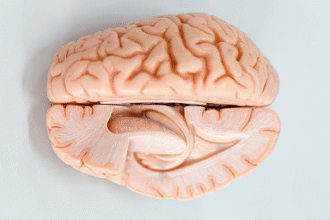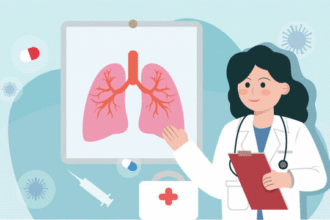Lymphoma Clinical Manifestations and Initial Evaluation
Overview
Lymphomas present with a spectrum of nodal and extranodal findings influenced by histologic subtype (Hodgkin Lymphoma, HL vs Non‑Hodgkin Lymphoma, NHL), anatomic distribution, tumor biology, and host immune status. Early recognition of red‑flag features expedites staging and therapy, improving outcomes.
- Overview
- Cardinal Clinical Features
- 1. Lymphadenopathy
- 2. B Symptoms
- 3. Pruritus and Constitutional Complaints
- 4. Extranodal Involvement (More Common in NHL)
- 5. Mediastinal and Retroperitoneal Disease
- 6. Organ‑Specific Compression
- Differences: Hodgkin vs Non‑Hodgkin Lymphoma
- Red Flags Requiring Urgent Workup
- Initial Evaluation Strategy
- Staging and Prognostic Tools (Brief)
- Early Management Considerations (Pre‑Treatment)
- Key Takeaways
Cardinal Clinical Features
1. Lymphadenopathy
- Painless, progressive enlargement of superficial lymph nodes (cervical > supraclavicular > axillary > inguinal) is classic in HL.
- Nodes: rubbery, discrete early; may coalesce later; usually non‑tender unless hemorrhage or infection supervenes.
- Asymmetric distribution is common. Generalized lymphadenopathy suggests systemic dissemination or specific infectious/autoimmune differentials.
2. B Symptoms
- Unexplained fever >38°C, drenching night sweats, and unintentional weight loss >10% over 6 months.
- More frequent in HL and aggressive NHL; correlate with advanced stage and higher inflammatory cytokine burden.
3. Pruritus and Constitutional Complaints
- Generalized pruritus (not always with rash) may precede HL diagnosis.
- Fatigue and malaise reflect cytokine release, anemia, or metabolic impact.
4. Extranodal Involvement (More Common in NHL)
| Site | Possible Manifestations |
|—|—|
| Gastrointestinal (small intestine, stomach) | Abdominal pain, altered bowel habits, bleeding, obstruction, mass effect |
| Bone marrow | Cytopenias, circulating blasts in leukemic phase |
| Skin | Papules, plaques, nodules, tumors, ulceration (e.g., cutaneous T‑cell lymphoma) |
| CNS (parenchymal, leptomeningeal) | Headache, cranial neuropathies, seizures, paraplegia (spinal cord compression) |
| Waldeyer ring | Sore throat, dysphagia, airway compromise |
| Hepatosplenic | Splenomegaly (LUQ fullness, cytopenias) |
| Bone | Focal pain, pathologic fractures |
5. Mediastinal and Retroperitoneal Disease
- Mediastinal mass (especially mediastinal large B‑cell lymphoma or nodular sclerosis HL): cough, dyspnea, chest tightness, SVC syndrome (facial plethora, distended neck veins).
- Retroperitoneal nodes: abdominal fullness, early satiety, ureteral obstruction (hydronephrosis).
6. Organ‑Specific Compression
- Epidural extension → back pain, motor weakness, bowel/bladder dysfunction (emergent MRI evaluation).
- Biliary obstruction → jaundice; vascular impingement → edema, thrombosis.
Differences: Hodgkin vs Non‑Hodgkin Lymphoma
| Feature | HL | NHL |
|—|—|—|
| Age distribution | Bimodal (young adults; later life) | Increases with age; median older |
| Initial presentation | Cervical mediastinal nodes | Nodal or extranodal (GI, skin, CNS) |
| B symptoms | More common | Variable; more in aggressive subtypes |
| Extranodal disease at presentation | Less frequent | Common (especially aggressive forms) |
| Pattern of spread | Contiguous nodal chains | Non‑contiguous, hematogenous early |
Red Flags Requiring Urgent Workup
- Rapidly enlarging nodal mass (>2 cm) persisting >4 weeks without infectious cause.
- B symptoms with lymphadenopathy.
- Unexplained persistent cytopenias.
- Spinal cord compression signs (weakness, urinary retention, saddle anesthesia).
- SVC syndrome (facial swelling, venous distention, dyspnea).
- Hypercalcemia, tumor lysis labs at baseline (aggressive/high tumor burden disease).
Initial Evaluation Strategy
- Detailed history: onset/duration of node enlargement, systemic symptoms, exposures (infections, autoimmune disease, immunosuppression, HIV risk), prior malignancy.
- Physical exam: map nodal regions; assess spleen/liver size; skin exam; neurologic screening; look for effusions.
- Laboratory tests: CBC with differential, CMP (renal/hepatic), LDH (tumor burden), uric acid, ESR/CRP, hepatitis B/C serology, HIV testing. Consider beta‑2 microglobulin.
- Imaging: Contrast‑enhanced CT neck/chest/abdomen/pelvis; PET‑CT (preferred for staging FDG‑avid lymphomas) prior to therapy initiation.
- Tissue diagnosis: Excisional lymph node biopsy is the gold standard (preserves architecture for immunophenotyping and molecular studies). Avoid relying on FNA alone unless triaging or for deep sites.
- Ancillary studies: Flow cytometry, immunohistochemistry (CD markers, light chain restriction), cytogenetics/FISH (e.g., MYC, BCL2, BCL6), molecular assays (clonality, mutation profiling).
- Bone marrow biopsy: for staging select lymphomas (e.g., indolent, non‑FDG‑avid components) if PET does not clarify marrow status.
Staging and Prognostic Tools (Brief)
- Ann Arbor (with Cotswolds modifications) for HL and many NHLs (I–IV with A/B/E/S modifiers).
- International Prognostic Index (IPI) for aggressive NHL; age‑adjusted IPI; revised IPI.
- FLIPI/FLIPI2 for follicular lymphoma; MIPI for mantle cell lymphoma; IPS for HL.
Early Management Considerations (Pre‑Treatment)
- Manage tumor lysis risk: prophylactic hydration ± allopurinol; rasburicase for very high tumor burden or elevated uric acid.
- Address compressive emergencies urgently (radiation or steroids after securing diagnostic material when feasible).
- Vaccination planning prior to rituximab (pneumococcal, influenza) and HBV screening/antiviral prophylaxis if surface antigen or core antibody positive.
- Fertility preservation counseling for reproductive‑age patients before cytotoxic or alkylating regimens.
Key Takeaways
- Painless lymphadenopathy with systemic features warrants structured evaluation; excisional biopsy remains essential.
- Distinguishing HL from NHL and indolent from aggressive subtypes directs urgency and treatment intensity.
- Early attention to emergencies (SVC syndrome, spinal cord compression, tumor lysis) prevents irreversible morbidity.







